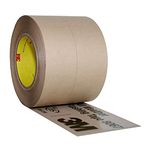Crown-molding article not enough
As a longtime reader of Fine Homebuilding and somewhat on the sidelines being a dangerously educated do-it-yourselfer, I am endlessly, morbidly fascinated by the vitriolic nature of professionals responding to your articles. It’s time to join the fray. “Installing Crown Moldings” by Joseph Beals (FHB #130, pp. 78-83) was not enough!
This article revealed some of the mysteries of crown molding, but having just completed such a project, I have so many more questions. Great tips on using backing trim (I wish I’d known) and how to cut an outside corner (none of the ten books I looked at gave me that tip). Damn the editor for limiting your article to a handful of pages: You could have gone on forever. I still have so many more questions:
Do you straight-butt this stuff together on long runs?
Do you really nail this stuff without pilot holes?
What kind of coping saw and blades do you use?
What’s the secret to coping?
I can’t believe how maddening this project was. I’m sure a lot of it had to do with a lack of 90° angles in my home. I still think back to the day I started looking at millwork samples at the neighborhood home center—this guy gave me a sad look and told me how difficult crown molding was to install. I was so vain and stubborn.
—Bruce Hamilton, Atlanta, GA
Author Joseph Beals replies: There are two problems with a straight butt joint: First, that vertical line is always conspicuous; second, there is no way to fasten the two ends together. I splice the ends with a beveled scarf joint. One piece is cut at a compound angle, as though for a 90° inside corner. The other piece is cut as you would for an outside corner. The joint is glued and nailed through the lap.
Crown to be painted is typically a softwood. When I buy the stock, I watch out for the hard-grained pieces and avoid them. What I buy can usually be hand-nailed with 6d bright finish nails without drilling first. At the ends, or with larger or galvanized nails, I’ll drill pilot holes. And I always drill hardwoods.
For coping, I use an old Sandvik coping saw, which seems to have a heavier frame than hardware-store saws. I buy any coarse-tooth blade, and I’m not particular about brand or price. I mount the blade to cut on the push stroke, which annoys purists, but I prefer the forward action. The sawing is the rough work, designed to remove the bulk of material with a severe back cut. The fine tuning with a chisel, rasp or file is the key to a perfect fit.
There are two other secrets to coping. First, you must have the right picture in your head of what you’re trying to do, which can be difficult. Second, practice. It is astonishing how much practice helps.
A painting tip for easy roller-tray cleanup
I was just reviewing your article on painting (FHB #128, pp. 82-87) and wanted to offer up a tip I have found quite useful. When painting with many colors in the same day, it can be hard to have enough rolling trays around. An experienced painter showed me a trick using a garbage bag. You put the tray in the garbage bag, flatten out the rolling area, then tape around the edge with masking tape so that the bag doesn’t move around. You’re left with a tray that is dry and can be used for the next color. I also find that if you are finishing up with the roller, you can use the bag to remove the roller and wrap up the whole thing for disposal.
—Eric S. Armour, via e-mail
Advertising complaints
I notice that a number of letters you publish express a difference of opinion with the author of some previous article or letter. And I think your general thrust is in the direction of honest information aimed at improving the quality of home building. I therefore hope you will also be willing to print this difference of opinion regarding the advertisement on p. 23 of your February/March issue (FHB #129) for redwood siding sold by The Pacific Lumber Company.
The headline reads, “Real Redwood…Not a Compromise.” I hope many of your readers recognize that even in the siding depicted in the photo, there is already much that is compromised. Redwood built its reputation on the decay resistance and stability of its slow-growing, old-growth, tight-grain lumber of 50 and 100 years ago. The siding depicted, with its widely spaced growth rings, knots and sapwood, is clearly not old growth and should not be expected to perform as old-growth siding. Especially, were it left unfinished, it would be subject to cupping and sapwood rot. And beneath a painted finish (also depicted in the ad), board ends would have to be individually end-primed to prevent redwood’s characteristic resins from marring the finish. Today’s redwood: More work, no advantage—best left in the forest.
—George Emmert, Huntington, IN
After receiving your recent issue (FHB #130), I was greatly disappointed to find several advertisements that displayed women in various stages of undress. As a married man and father, I am very careful about what comes into my home. Until recently, I would leave your magazine out on the coffee table for friends and family to look at. Now I will have to preview your magazine before going through it with my young sons and daughter. I see no reason why you have to allow this type of advertising into such a quality magazine. Please don’t compromise your high standards for a few advertising dollars.
—Allen Sangree, Harrisburg, PA
Claims ceiling fans got a bum rap
I must take issue with the disparaging remarks made about conventional ceiling fans in your “Cross Section” article about a new high-tech fan (FHB #130, p. 54). Danny Parker is correct in stating that ceiling fans do not cool but rather provide improved air circulation. They are best considered as a circulator rather than as a fan, which implies higher velocity of air movement. Properly set up, a ceiling fan destratifies and thoroughly mixes air within a space, improving air-conditioning in the summer and heating in the winter. We have used them for the past 40 years and consider them an outstanding investment, improving both efficiency and comfort.
But a typical three-speed unit uses 10w, 60w and 100w at low, medium and high speeds respectively. We have very rarely used ours on high as it is akin to living under a helicopter. Most of the time, the units are on low, rotating at 30 rpm and using 10w. At our current electric rate (12¢ per kwh), this amounts to about 20¢ per week. The economic impact of saving energy with the new high-tech fan, even 50%, is negligible given what will probably be a much higher initial cost. Recouping capital outlay at this rate is a very long-term venture.
Additionally, what is the purpose of featuring a product that is not yet in production and may never become available? Unfortunately, high-tech sometimes gets very expensive, and production costs may make the fan too expensive to justify. Making this fan may also use much more energy than the old-fashioned units, which should be considered. I suggest that Parker apply his expertise to air-conditioning units wherein there is a lot of room for improvement.
Last, you may very easily install compact fluorescent bulbs in existing ceiling-fan lights and realize considerable energy saving plus the added benefit of greatly increased bulb life.
—Robert Koffsky, via e-mail
Boot laces can trip you up
A short article in your February/March issue (FHB #129, “Tools & Materials,” p. 132) extolled the virtues of “stick-to-the-roof” shoes manufactured by Cougar Paws. They may indeed stick like glue, but I have experienced a near-fatal flaw with this style of boot. As with many work boots or hiking boots, there are lace hooks instead of eyelets on the upper portion of the boot. Those lace hooks can catch the bow of the lace on the opposite foot, making for a fast trip down to the ground. Luckily, I was on a low-slope roof when this happened to me, and I landed with enough body weight still on the roof to prevent going over the edge. I immediately got my Vise-Grips and crushed the hooks inward. I hope the manufacturers will come up with something better for people working on roofs.
—Lloyd Wright, Williams Lake, BC, Canada
Bay-window roof revisited
I just read Scott McBride’s clear presentation on bay-window roof layout by graphic development (FHB #129, pp. 90-93). Appropriate to the article is a nice combination of photography and line drawings. One more cognitive step should have been included, though.
To lay out the path or run for the hip rafter of a regular hip roof, you can use 12 and 12 on the framing square. You can then use the diagonal measure between 12 and 12, i.e., 17, as the run figure with whatever rise you have to determine both the lengths and cuts of your regular hip rafters. This procedure is regular hip-roof framing.
Similarly, McBride describes how to use 5 and 12 to lay out the path of an octagon hip for the bay window shown. One more step would have been to measure diagonally between 5 and 12 on the square. This measure turns out to be 13, which can then be used as the run figure with whatever rise you have to determine both the lengths and cuts for octagon hips, just as you use 17 for regular hips.
The real reason that I am bringing this up, though, is to celebrate the remarkable combination of luck and genius that has evolved into the western carpenter’s “inches rise in 12 inches run” system of roof framing. No trigonometry, no degrees (except to set power tools): just such-and-such rise per foot run of the common. Use 17 instead of 12 as the run for regular (square) hips and 13 as the run for octagon hips. I’m sure that it’s this convenience that has led to the predominance of octagon framing over, say, hexagon.
—Jud Peake, Oakland, CA
Thinks trigonometry is faster
As evidenced by articles in your past two issues, there seems to be a movement away from the use of math, specifically trigonometry, in determining the proper lengths, locations and cut angles for building components in framing.
In “Framing a Bay-Window Roof” (FHB #129, pp. 90-93) the author states that graphic development combined with the aid of scrap stock takes the “guesswork” out of determining all pertinent angles. In “Framing an Elegant Dormer” (FHB #130, pp. 62-69), the author states that although he has the necessary math skills, he finds it easier to use a taut stringline to determine the angles that are needed for framing irregular valleys.
I believe math is the key to fast, accurate framing and that graphic development and stringlines are merely useful construction aids. I don’t mean to disparage the aforementioned articles. On the contrary, I use sketches and stringlines on a daily basis framing custom homes, but only as guidelines for my calculations. My understanding of trigonometry allows me to determine accurately the proper placement of roof-framing members, along with their lengths and cut angles from simple plumb cuts to compound miters and bevels.
—A.J. Mackley, Asheville, NC
More tips on hot-water loops
Hot-water loops really work (FHB #130, “Q&A,” p. 26). I have successfully installed a couple of them myself and thought I’d share a few additional tips.
First, modern water heaters typically have a cold-water inlet and a hot-water outlet both located on the top of the tank. There is a third port, a flush drain with a spigot, located at the bottom of the tank. These three openings make installing a loop even easier than in your drawings because the loop does not involve the cold-water line at all. Simply remove the drain spigot (it has 3⁄4-in. pipe threads) and install a 3⁄4-in. tee at the bottom of the tank. The loop can return into one side of the tee, and the spigot can be replaced in the other side of the tee.
Second, installing a ball valve in the loop allows you to control the rate of flow by leaving the valve partially closed. I have found that a hot-water loop, when properly installed, can cycle a large volume of water by gravity alone. By cutting down the volume, you can achieve the desired effect with only a small flow of water (provided the loop is properly insulated) and use far less energy. It’s easy to gauge where the valve should be set: If the water in the loop is not hot enough, open the valve a little.
And third, there is one important consideration that the drawings don’t make clear. In most houses, the farthest point of use is some distance horizontally from the water heater. The hot-water line leading away from the tank must slope gradually uphill, and the return portion of the loop must slope downhill back to the tank. If this slope is reversed anywhere in the line, natural convection will not occur.
—John La Torre Jr., Tuolumne, CA
Glazing questions left unanswered
Your normally excellent “What’s the Difference?” column fell far short with your examination of window glazing (FHB #130, p. 144). First, you did not explain why the seal between the glass and frame fails. If it is due to the expansion-rate differences between the glass and frame material, then it would follow that the more flexible glazing (i.e., latex) would seal longer. Your article did not enlighten me. Also, you omitted a glazing that has recently begun to appear in my local Home Depot. They now carry polyurethane-based glazing that claims to be the best there is. I expect FHB to be on the cutting edge of new techniques that will make our work even finer. Why else would I read it?
—Joe Bonda, New Orleans, LA
Fine Homebuilding Recommended Products
Fine Homebuilding receives a commission for items purchased through links on this site, including Amazon Associates and other affiliate advertising programs.

Handy Heat Gun

Affordable IR Camera

8067 All-Weather Flashing Tape





















